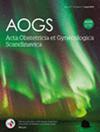Endothelial damage and complement dysregulation in fetuses from pregnancies complicated by preeclampsia
Abstract
Introduction
Our objective was to evaluate the endothelial function profile and complement system in fetuses from preeclamptic pregnancies using ex vivo and in vitro approaches.
Material and Methods
A total of 66 singleton pregnancies were prospectively recruited comprising 34 cases of preeclampsia and 32 normotensive pregnancies matched for baseline characteristics. In the ex vivo approach, soluble tumor necrosis factor-a receptor 1 (sTNFR1), vascular cell adhesion molecule-1 (sVCAM-1), intercellular adhesion molecule-1 (sICAM-1), Von Willebrand factor (sVWF), terminal complement complex (sC5b-9), Factor H, complement component C3a and Factor Bb were analyzed in fetal cord blood samples. In the in vitro model, vascular cell adhesion molecule-1 (VCAM-1), intercellular adhesion molecule-1 (ICAM-1), Von Willebrand factor (VWF), vascular endothelial cadherin (VE-Cadherin), endothelial nitric oxide synthase (eNOS), reactive oxygen species (ROS) and C5b-9 deposits were evaluated on endothelial cells in culture exposed to fetal sera or plasma.
Results
Increased sVCAM-1, sICAM- l and decreased Factor H and Factor Bb concentrations were detected in preeclampsia fetuses as compared to fetuses from normotensive mothers (509.4 ± 28 vs. 378.4 ± 34.3 ng/mL, 161.1 ± 11.9 vs. 114.8 ± 6.8, 199.6 ± 18.3 vs. 267.1 ± 15.4 ng/mL and 6.6 ± 0.7 vs. 10.3 ± 1.4 μg/mL respectively, p < 0.05) with similar results in sTNFR1, sVWF, sC5b-9 and C3a. Endothelial cells exposed to fetal sera from preeclampsia showed incremented expression of VCAM-1(38.1 ± 1.4% vs. 28.3 ± 1.6%, p < 0.01), ICAM-1 (12 ± 0.9% vs. 8.6 ± 0.6%, p < 0.05), VWF (43.5 ± 2.9% vs. 3.7 ± 0.3%, p < 0.05), and ROS (5 × 1013 ± 1 × 1012 vs. 3.5 × 1013 ± 1.4 × 1012, p < 0.01) with similar expression of VE-Cadherin and eNOS as compared to those exposed to control fetuses. While soluble C5b-9 was similar between the study groups (851.4 ± 177.5 vs. 751.4 ± 132.81 ng/mL, p > 0.05), significantly less C5b-9 deposits on endothelial cells were induced by fetal plasma from preeclamptic compared to normotensive mothers (fold change 0.08 ± 0.02 vs. 0.48 ± 0.13, p < 0.01).
Conclusions
High levels of endothelial adhesion molecules and oxidative stress products suggest endothelial damage and reduced in vitro deposition of C5b-9 indicates complement dysregulation in preeclampsia fetuses. More research is necessary to study the impact of preeclampsia on fetal vascular health and innate immunity.


 求助内容:
求助内容: 应助结果提醒方式:
应助结果提醒方式:


